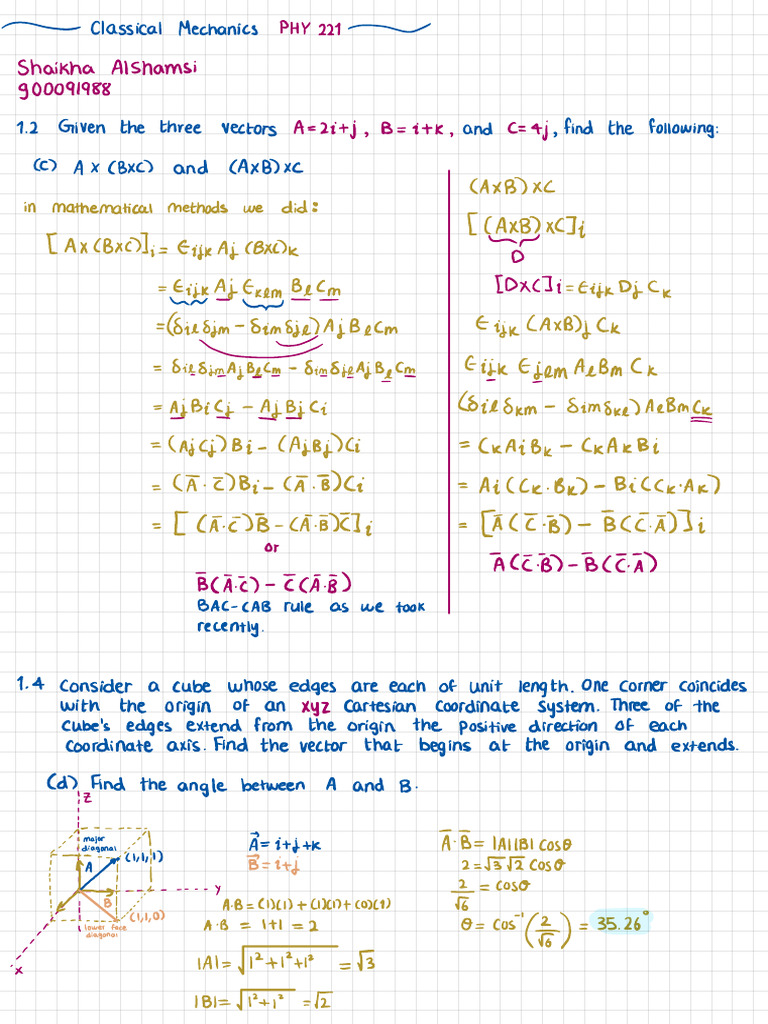At first glance, classical mechanics may appear as a mere relic of bygone eras, an ancient framework resting beneath the more modern and flamboyant theories in physics. Yet, for a particle physicist, classical mechanics is akin to the foundational bedrock of a vast, intricate edifice. Understanding this discipline is not simply a rite of passage; it is an essential rite of understanding from which more complex theories grow, branch, and blossom.
Classical mechanics forms the backbone of physical intuition, constructing a cognitive scaffold upon which the more abstract concepts of particle physics are erected. One can liken this process to establishing the first principles of architecture, where the structure’s stability relies on the solidity of its foundation. This fundamental importance is underscored by its ability to facilitate the grasping of motion, forces, and energy—concepts that are directly applicable to the minute and often elusive subatomic world.
Consider the natural symphony of the cosmos, where celestial bodies waltz gracefully through the void, obeying the laws of motion articulated by Newton and later refined by Einstein. The elegance of these movements serves as a prelude for the grander tales that interlace particle dynamics, providing essential analogies to the behavior of fundamental particles. As such, a particle physicist’s ability to visualize and conceptualize how particles interact within complex systems relies significantly upon classical mechanics.
When delving into the realm of particle physics, one confronts a myriad of interactions that govern the behavior of subatomic particles. These interactions are deeply rooted in classical concepts. For instance, electrostatic forces, a principal actor in the theater of particle collisions, can be described using the framework established by Coulomb’s law, a cornerstone of classical mechanics. Grasping how these forces operate underlies the comprehension of the more complicated quantum electro-dynamic theories.
Moreover, classical mechanics establishes the parameters of motion that are essential for understanding particle accelerators, the modern-day cathedrals of particle physics. Facilities such as the Large Hadron Collider (LHC) operate under principles that are steeped in classical mechanics. The manipulation of particles at relativistic speeds necessitates a robust understanding of concepts like momentum and kinetic energy, enabling physicists to harness classical equations to predict outcomes and interpret data effectively.
A deeper exploration reveals that the nuances of classical mechanics also illuminate the path toward identifying and differentiating particle behavior in collisions. For example, during particle collisions, phenomena such as elastic and inelastic scattering can be best understood through classical frameworks. The classification of scattering types echoes the determiner of energy transfer in collisions, thus furnishing vital insights into how particles interact under specific conditions.
As we seep further into the core of particle physics, we confront the concept of relativistic effects, as articulated beautifully through the lens of classical mechanics. The transition from classical to relativistic mechanics forces one to reconsider spatial dimensions and time intervals, reinstating the interconnectedness of motion and energy. The insights gained from classical mechanics serve as invaluable preliminary steps toward grappling with relativistic dynamics where velocities approach that of light.
Another dimension in which classical mechanics impacts particle physics is through the principles of conservation laws—momentum and energy are to particle physics what rhythm and harmony are to music. These principles find their paragon expressions within classical mechanics. Their applicability extends into quantum theories, guiding physicists in predicting particle behaviors in high-energy environments where interactions become increasingly complex.
The intricate tapestry of particle physics is woven with threads spun from gravitational forces—an embodiment of classical mechanics at play. Understanding how gravitational fields influence particles at varying scales equips physicists with an appreciation for gravitational interactions that shape not just the microcosm but the macrocosm as well. Gravitational waves and their detection, for instance, call upon classical mechanics’ analytical approaches, despite the quantum complexities they entail.
Furthermore, embracing classical mechanics cultivates a physicist’s intuition. It is the sculptor’s chisel, refining the ability to visualize phenomena that transcend individual expertise. This intuition becomes particularly essential when scenarios evolve beyond classical predictability into realms governed by quantum mechanics. The refinement of intuition through classical principles aids in deciphering the peculiarities of wave-particle duality, uncertainty principles, and the probabilistic nature of particle interactions.
In conclusion, the significance of classical mechanics to a particle physicist transcends mere academic curiosity; it is a critical component of their toolkit. The intricacies of motion, energy, and forces—though elegantly applicable to macroscopic realms—once comprehended, resonate powerfully within the subatomic landscape. The mechanistic framework that classical mechanics provides serves not only as preparation for understanding particle physics’s esoteric phenomena but as a portal that fosters deeper inquiry and awe at the universe’s fundamental design.
Thus, classical mechanics remains an indispensable ally for those who strive to unravel the mysteries of the universe, linking the tangible with the abstract. It serves as a testament to the enduring wisdom yet to be uncovered in the folds of time, expressing itself eternally within the heart of particle physics.












